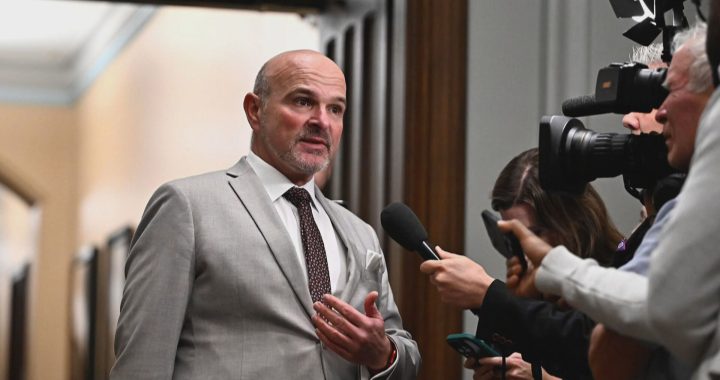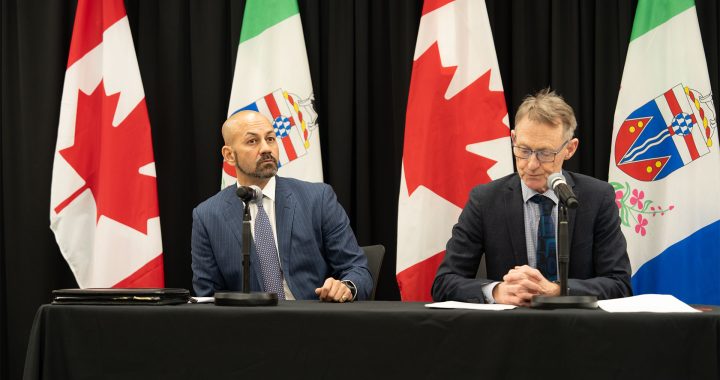(Beau Dick and others peer into Canadian Museum of History where ancestral artifacts held. APTN/Tim Fontaine)
By Tim Fontaine
APTN National News
Ceremonial items in storage at the Canadian Museum of History should be returned to their original owners, a First Nation hereditary chief says.
“In view of the genocide that was inflicted upon us, the cultural genocide that continues, sometimes we see these places (museums) as trophy halls,” said Beau Dick, an artist and hereditary chief from the Namgis First Nation in British Columbia.
Dick was among those who took part in an impromptu ceremony outside the Canadian Museum of History in Gatineau, Que., Monday. The group says they wanted to let Canadians and museum staff know that the items on display aren’t just ancient history.
“You go in there and it appears like something from yesteryear but our people are still alive. We’re still connected to these emblems and these items and people don’t really know that.” Dick said.
Dick was in Ottawa with a group who performed a recently revived traditional shaming ceremony on Parliament Hill called ‘copper cutting’ or ‘breaking copper.’ The group made the decision to visit the museum just hours before returning to B.C. and perform a different ceremony, one to honor the items in the museum’s collection.
The group walked through the museum grounds in their traditional regalia, singing and drumming, stopping to chat with tourists and even posing for a few photos.
Chantal Shryer is the vice president of public affairs at the museum. She says the group could have performed the ceremony inside the facility, but it was near closing time.
“We didn’t have any notice that they were coming so we facilitated for them to have their ceremony right here.” said Shryer.
The group stopped in front of the glass wall just outside the First Peoples Hall to perform their ceremony. First Peoples Hall holds the facades of traditional longhouses and totem poles from West Coast nations.
“Where are the rest of them? They’re being hidden away. And I think the reason is because they can’t provide a bill of sale for a lot of that stuff.” said Dick. “It was stolen or it was coerced from our people during the Potlatch prohibition.”
The Potlatch is an elaborate ceremony where wealth is distributed amongst First Nation people from the Pacific Northwest. The ceremony was made illegal in 1885 and practitioners were threatened with jail.
The ban was only lifted in 1951 but Dick believes most ceremonial items the museum were taken during the years the Potlatch was illegal.
The museum says it has over 50,000 items from across the country, including several hundred ceremonial pieces from B.C. Only a fraction are on display, the rest are archived or on loan to other museums.
“They’re responsible for saving our heritage. Hiding it isn’t the way to do it. If they can’t handle it, they should give it back to us and let us display it in our way,“ Dick said.
The Canadian Museum of History does have a repatriation policy and has returned items in the past, including some to BC First Nations. The Nisga’a Nation also have an agreement to rotate possession of items with the museum.
Dick admits he made no formal requests for repatriation today, he says the group simply wanted to get their message out.
“To make our presence known and to whisper our truth. You don’t have to shout it. You don’t have to be in people’s faces, shaking your fist and shouting ‘there’s injustice and this isn’t right.’ No. We’re here
more on a spiritual level,” said Dick.
An internationally renowned carver, some of Dick’s work is on display in the museum. Before leaving, members of the group peered through the museum’s windows, pointing out carvings and poles that they had either helped create or were connected to their communities.
They vowed to return next year to perform a ceremony inside the museum and to begin discussing the repatriation some of the ceremonial items in the collection.
@anishinaboy









